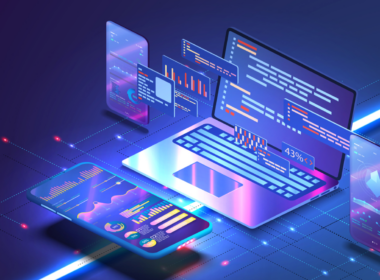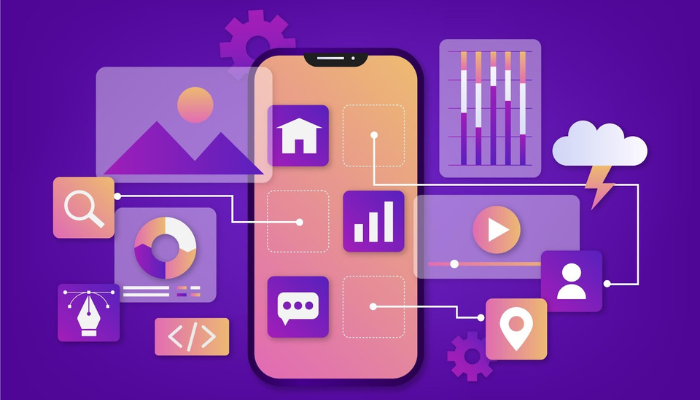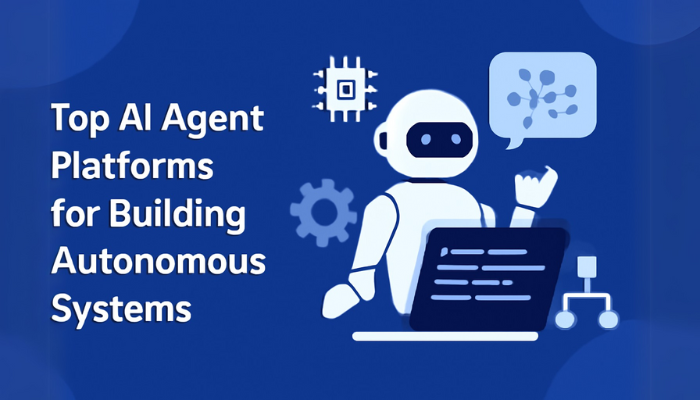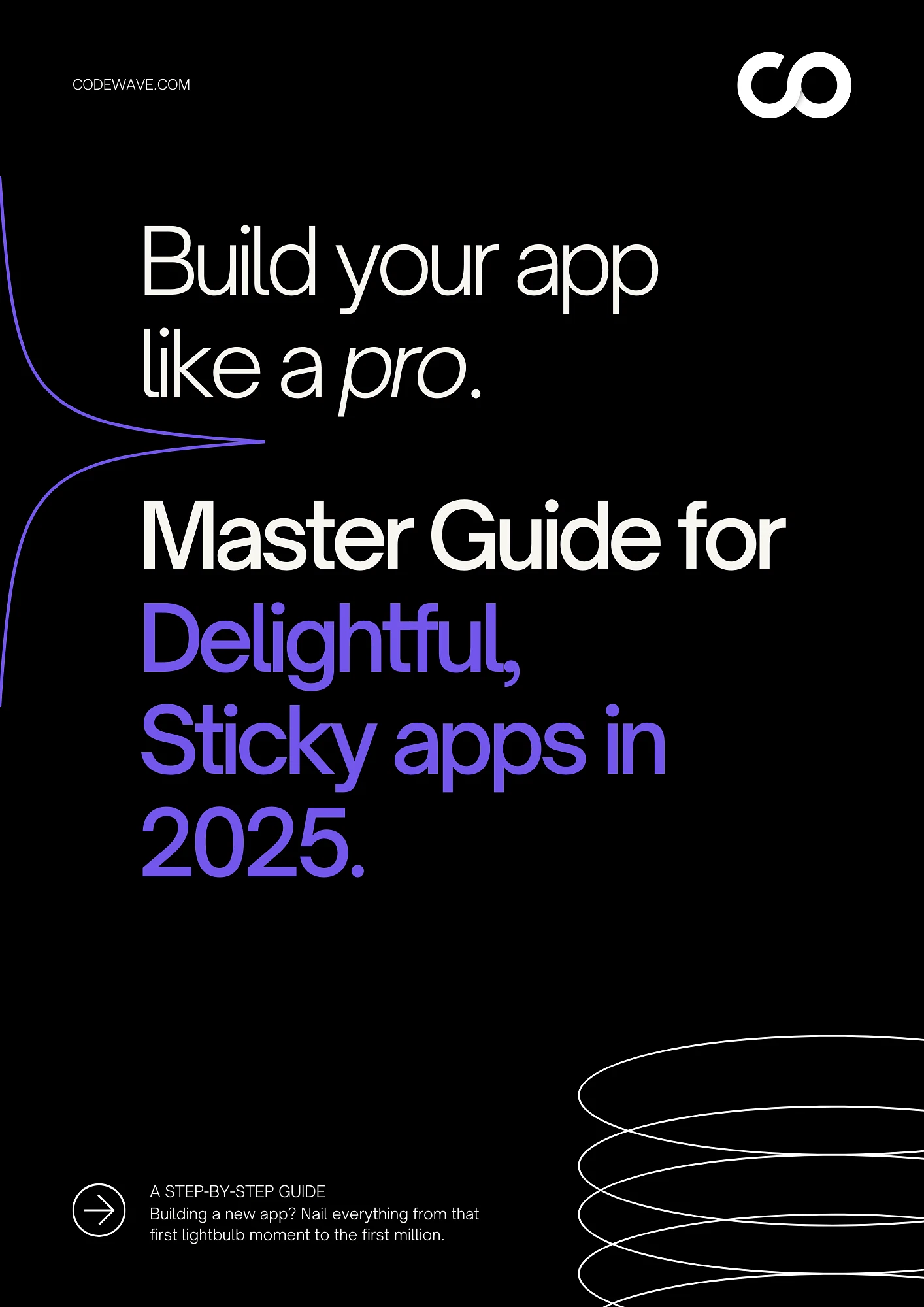You’re holding the future in your hands quite literally. Every time you open a fitness tracker, manage your smart home, or check your delivery in real-time, you’re engaging with the Internet of Things (IoT). But what makes these experiences seamless? It’s the powerful synergy between IoT and mobile app development.
With the world heading toward hyper-connectivity, integrating IoT native mobile SDK development into your mobile app strategy is no longer a futuristic idea; it’s a competitive necessity. Iot enhances how mobile apps function by connecting them to smart devices, allowing for real-time interactions, automation, and data-driven decisions.
In this article, you’ll discover how IoT is reshaping the mobile app development landscape, unlocking smarter solutions, cost efficiencies, and enhanced user experiences.
Understanding the Role of IoT in Mobile App Development
So, what exactly happens when IoT meets mobile apps?
At its core, IoT is about connecting physical devices, sensors, wearables, and appliances to the internet. When paired with mobile apps, these devices transform into intelligent systems. Your mobile app becomes the control center, interpreting data from these devices, sending commands, and providing instant feedback to users.
Think about it this way: your smartwatch records your heart rate, syncs with your health app, and sends a notification if it spots an irregular pattern. That’s IoT in action, powered by mobile connectivity.
Integration with Third-Party Applications
But IoT mobile apps rarely operate in isolation. To maximize their potential, they often integrate with third-party platforms such as payment gateways, voice assistants, CRM tools, cloud storage, and analytics systems.
This multi-layered ecosystem helps deliver richer experiences, streamlining tasks like data storage, real-time decision-making, or remote management all through your app’s interface.
Strategic Benefits of IoT in Mobile Apps
Now, let’s talk about impact. Why should you care about IoT in your mobile strategy?
1. Enhanced User Experience Through Real-Time Data
One of the biggest game changers IoT brings to mobile apps is real-time data exchange. Users no longer have to refresh or wait; they get instant insights, feedback, and control.
Imagine controlling your thermostat remotely through your phone and seeing the room temperature change in real-time. That level of responsiveness builds trust and satisfaction.
2. Improved Data Collection and Analytics
IoT-enabled apps act as data powerhouses. They constantly gather, process, and analyze user behavior, device performance, environmental changes, and more. This helps you personalize app experiences, optimize product offerings, and make smarter business decisions.
For instance, a connected car app might analyze driving habits and suggest fuel-efficient routes or notify you about needed maintenance all automatically.
3. Cost-Effective Solutions and Operational Efficiencies
IoT mobile apps often lead to reduced operational costs. How? They automate manual processes, monitor device status remotely, and predict failures before they occur.
In industries like manufacturing, apps connected to IoT sensors can minimize downtime, track machinery performance, and reduce human intervention, saving time and money.
Reimagine business processes and boost growth with Codewave’s transformation expertise. See How We Can Help You!
Technological Framework for IoT Mobile Apps
To bring your IoT app idea to life, the right tech stack is key. Let’s take a look at the technical framework for mobile apps.
Importance of Choosing the Right Technology Stack for IoT Mobile Apps
When developing an IoT (Internet of Things) mobile app, selecting the right set of technologies is important. Think of it like building a house, if your foundation (tech stack) is weak, the whole structure becomes unstable. A well-chosen technology stack ensures that your app works smoothly with IoT devices, handles data efficiently, and scales as your user base grows.
Let’s break down the main components of this stack and why they matter:
1. IoT-native SDKs for Device Communication
- What it is: SDK stands for Software Development Kit. IoT-native SDKs are tools provided by hardware manufacturers or platforms that allow your mobile app to connect with IoT devices (like sensors, wearables, or home appliances).
- Why it’s used: These SDKs handle complex tasks like pairing devices, reading sensor data, and sending commands. Without them, developers would need to manually write code for every device interaction.
- Examples: Google’s Android Things SDK, AWS IoT Device SDK, Espressif SDK for ESP32 devices.
2. Cloud Platforms like AWS IoT, Google Cloud IoT
- What it is: Cloud platforms provide backend services that store, process, and analyze data from IoT devices. They also help manage device fleets and ensure secure communication.
- Why it’s used: IoT apps generate a huge amount of data. Cloud platforms offer scalable storage, powerful data analytics, and real-time processing capabilities — things that a mobile device alone can’t handle.
- Examples:
- AWS IoT Core: Manages millions of devices, supports secure messaging, and real-time data processing.
- Google Cloud IoT: Offers device management, data pipelines, and AI-driven insights.
3. Mobile Development Frameworks (Flutter, React Native, Swift, Kotlin)
- What it is: These are frameworks and languages used to build the user interface and functionality of the mobile app.
- Flutter & React Native: Cross-platform frameworks (build once, run on both Android & iOS).
- Swift: Native language for iOS apps.
- Kotlin: Preferred language for Android apps.
- Why it’s used:
- Cross-platform (Flutter/React Native): Faster development and lower costs for apps that need to run on both iOS and Android.
- Native (Swift/Kotlin): Better performance, more access to device-specific features, smoother UI.
- Cross-platform (Flutter/React Native): Faster development and lower costs for apps that need to run on both iOS and Android.
4. Communication Protocols (HTTP, MQTT, CoAP)
- What it is: Communication protocols are the languages that devices and apps use to exchange information.
- HTTP: Standard web communication protocol.
- MQTT (Message Queuing Telemetry Transport): Lightweight, efficient protocol designed for low-power, low-bandwidth devices.
- CoAP (Constrained Application Protocol): Similar to HTTP but optimized for simple IoT devices with limited resources.
- Why it’s used:
- HTTP: Good for general apps but can be heavy for IoT.
- MQTT & CoAP: Specifically designed for IoT environments where devices may have poor connectivity or limited power. They ensure reliable communication with minimal data usage.
5. Scalability, Documentation & Integration Support
- Scalability: As your IoT app grows, it must handle more users and devices without slowing down. Choosing scalable tools ensures your app can grow without major rework.
- Strong Documentation: Good documentation speeds up development, helps debug issues, and ensures developers can easily learn and use the tools.
- Integration Support: Seamless integration with existing systems, devices, and third-party services (like Alexa, Google Home) makes your app more versatile and future-proof.
Simply put, your tech stack is the toolbox. If you pick the wrong tools, building your IoT app becomes slow, clumsy, and unreliable. But with the right SDKs (device communication), cloud platforms (data handling), development frameworks (UI building), and protocols (device talk), your app will run smoothly, scale easily, and delight users.
Hybrid Application Development for Consistent User Experience
Hybrid apps offer the best of both worlds faster development and wider reach. For IoT applications, this means a unified experience regardless of device or OS.
Using frameworks like Flutter or React Native, you can develop once and deploy everywhere while still maintaining real-time interactions with IoT devices through shared APIs and SDKs.
Launch Intuitive Mobile Apps. Get high-performance iOS, Android, or cross-platform apps tailored to your business needs.
Strategies to Develop IoT Mobile Apps
Developing an IoT mobile app requires more than just coding an interface. It’s about building a bridge between smart devices and users, ensuring real-time communication, security, and scalability. To achieve this, developers need to follow structured strategies. Here are the most important ones:
1. Define the Purpose and Use Case Clearly
- Why it matters: IoT apps can serve different purposes, from home automation to industrial monitoring. Determining the exact problem you’re solving ensures the app’s features align with user needs.
- Example: A fitness tracker app would focus on real-time data display, whereas a smart home app might prioritize device control and automation.
2. Choose the Right Hardware and Connectivity
- Device Selection: Understand the types of IoT devices (sensors, wearables, controllers) your app will connect with.
- Connectivity Protocols: Decide on communication methods like Wi-Fi, Bluetooth, Zigbee, or Cellular (4G/5G) based on device location, range, and power constraints.
- Tip: Low-power devices prefer protocols like Bluetooth Low Energy (BLE), while industrial apps may need LoRaWAN or NB-IoT for long-range communication.
3. Select an Appropriate Technology Stack
- Mobile Frameworks: Flutter, React Native for cross-platform; Swift/Kotlin for native apps.
- IoT SDKs & Libraries: Use reliable SDKs for device integration.
- Cloud & Backend Services: AWS IoT, Azure IoT, or Google Cloud IoT for data processing, storage, and analytics.
- Protocols: MQTT for real-time lightweight messaging, HTTP for traditional APIs, CoAP for constrained devices.
4. Prioritize Data Security and Privacy
- Why it’s critical: IoT devices often handle sensitive data (health, home security, etc.).
- Key Practices:
- End-to-end encryption of data.
- Secure authentication (OAuth, JWT tokens).
- Regular firmware updates and patch management.
- Compliance with GDPR, HIPAA, or regional data privacy laws.
5. Design for Scalability and Performance
- Scalability: Ensure the backend can handle increasing numbers of connected devices and data streams without performance drops.
- Performance Optimization:
- Minimize app size and battery consumption.
- Optimize network usage (reduce data payloads).
- Use edge computing for faster, local data processing when needed.
6. Implement Real-Time Data Sync & Notifications
- IoT apps rely on instant feedback.
- Use protocols like MQTT/WebSockets for real-time data updates.
- Integrate push notifications for alerts (e.g., smoke detector alarm, fitness goal achievement).
7. Focus on User Experience (UX)
- Design intuitive dashboards for easy device control and data visualization.
- Use gesture-based controls, voice commands, and AI-based recommendations for a smart user experience.
- Ensure offline support where possible, so users can still interact with devices without constant internet access.
8. Test Across Multiple Scenarios
- Test with real devices and emulators.
- Simulate network failures, low-battery conditions, and device malfunctions.
- Conduct security penetration testing to identify vulnerabilities.
- Ensure cross-platform consistency for Android and iOS.
9. Continuous Monitoring and Updates
- Implement analytics and monitoring tools to track app performance and user behavior.
- Push regular updates for:
- Bug fixes
- Security patches
- Feature enhancements
- Maintain a feedback loop with users for constant improvement.
Building an IoT mobile app isn’t just about connecting devices to smartphones, it’s about creating a seamless, secure, and scalable ecosystem where users can interact with technology effortlessly. By following a well-structured development strategy, you ensure your app not only meets current user expectations but is also ready to adapt to future innovations in IoT.
A thoughtful approach to device compatibility, connectivity, security, and user experience will set your IoT app apart in an increasingly competitive market.
Remember: A successful IoT app bridges the gap between complex technologies and simple user needs and that balance starts with the right strategy.
Key IoT Use Cases Influencing Mobile App Strategies
IoT isn’t limited to one sector. Let’s walk through the industries where it’s making the biggest splash.
1. Healthcare Applications
The healthcare sector is undergoing a digital transformation with IoT-enabled mobile apps enhancing patient care and operational efficiency.
Key Concepts:
- Remote Patient Monitoring: Wearable devices connected to mobile apps track vital signs (heart rate, glucose levels, oxygen saturation) and send real-time data to doctors.
- Chronic Disease Management: Apps remind patients of medication schedules, monitor health trends, and flag anomalies for early intervention.
- Emergency Alerts: In critical situations, apps can automatically notify emergency contacts or healthcare providers for immediate action.
Example:
A diabetic patient uses a continuous glucose monitor linked to a mobile app. The app tracks blood sugar levels and alerts the user and their doctor if readings become critical, reducing hospital visits and improving disease management.
2. Industrial IoT Solutions
IoT in industrial settings is all about optimizing operations, reducing downtime, and improving supply chain visibility through mobile connectivity.
Key Concepts:
- Asset Tracking & Inventory Management: Mobile apps visualize real-time movement of goods within warehouses and supply chains using RFID and GPS sensors.
- Predictive Maintenance: Sensor data feeds into apps to monitor equipment health, predict failures, and schedule maintenance proactively.
- Anomaly Detection & Alerts: Machine learning algorithms analyze sensor data, flagging production anomalies and inefficiencies through instant notifications.
Example:
A logistics manager uses an app that shows live location of shipments, monitors cold chain conditions for perishable goods, and gets alerts if temperatures deviate, ensuring product quality during transport.
3. Retail Transformations
Retail businesses are using IoT and mobile apps to elevate customer experiences and streamline backend operations.
Key Concepts:
- In-store Navigation & Engagement: Beacons and sensors guide customers to specific products, offer location-based discounts, and enhance shopping experiences via mobile apps.
- Automated Inventory Replenishment: Apps connected to smart shelves track stock levels in real time and trigger reordering processes automatically.
- Self-checkout & Contactless Payments: IoT-enabled systems allow customers to scan and pay through their mobile apps, minimizing wait times.
Example:
A retail chain deploys an app that detects when a customer enters the store, sends personalized offers based on past purchases, and guides them to the product location, enhancing engagement and increasing sales..
4. Smart Homes and Consumer Convenience
The smart home revolution is one of IoT’s most visible successes. Mobile apps act as control centers, connecting users to a wide range of smart devices like thermostats, security cameras, lighting systems, and even kitchen appliances.
Key Concepts:
- Remote Control & Automation: Users can remotely adjust home settings (temperature, lighting) or automate routines (e.g., lights turning on at sunset).
- Energy Efficiency: IoT apps monitor energy consumption, sending alerts on overuse and suggesting optimal settings to save on bills.
- Security & Surveillance: Real-time alerts and live feeds from smart cameras, door locks, and motion detectors enhance home security.
Example:
A user can check who’s at the door via a video doorbell, remotely grant access through a smart lock, and monitor energy usage all through a single app interface, improving convenience and safety.
5. Smart Cities and Urban Mobility
IoT plays a pivotal role in making cities smarter and more efficient. Mobile apps interface with urban IoT networks to offer residents real-time information and services.
Key Concepts:
- Traffic & Parking Management: Apps provide live traffic updates, available parking spots, and alternate route suggestions by leveraging sensor data.
- Public Utilities Monitoring: IoT-powered apps track water usage, waste management schedules, and air quality indexes, empowering citizens with actionable data.
- Emergency Response Systems: IoT networks linked to mobile apps can detect accidents, fires, or floods, instantly alerting authorities and residents.
Example:
A smart city app notifies commuters about traffic congestion, suggests alternative routes, and even guides them to the nearest available parking spot, reducing commute stress and urban congestion.
6. Agriculture and Precision Farming
The agriculture sector is harnessing IoT to boost productivity and sustainability. Mobile apps connected to IoT sensors and drones bring precision farming into the hands of farmers.
Key Concepts:
- Soil & Crop Monitoring: Sensors track soil moisture, nutrient levels, and crop health, sending real-time updates to the farmer’s mobile app.
- Automated Irrigation & Pest Control: IoT systems automate irrigation based on weather data and soil needs, while drones monitor pest activity.
- Supply Chain Integration: From farm to table, IoT helps track produce conditions during storage and transport, ensuring quality and reducing wastage.
Example:
A farmer receives an alert about decreasing soil moisture and remotely activates the irrigation system through the app, optimizing water usage and improving crop yield without being on-site.
Connect devices, streamline data, and deliver real-time mobile experiences with Codewave’s IoT development services. Explore IoT Services now!
Challenges in IoT Mobile App Development
With great connectivity comes great complexity. Before you dive headfirst into IoT native mobile SDK development, it’s essential to address the hurdles.
1. Security Considerations and Data Management
IoT systems gather vast amounts of sensitive data. This creates an attractive target for cyber threats. From device authentication to encrypted data transmission, securing every touchpoint is crucial.
As a developer or business, you need to prioritize:
- End-to-end encryption
- Secure APIs
- GDPR and HIPAA compliance (where applicable)
- Robust authentication protocols
2. Development Complexities and Cross-Platform Challenges
Developing an IoT-ready mobile app isn’t a plug-and-play task. You’re dealing with multiple hardware devices, operating systems, and communication protocols.
You’ll need to ensure seamless performance across platforms (iOS, Android), manage low-latency communication with devices, and maintain scalability for future upgrades. Not to mention, your development team must be fluent in technologies like MQTT, BLE, and cloud integration.
Future Trends Shaping IoT Mobile App Strategies
IoT development doesn’t stand still. If you’re building for the future, here’s what you need to keep an eye on.
1. Integration of AI and Machine Learning
The future of IoT isn’t just connected, it’s intelligent. AI and ML are increasingly being integrated into IoT apps to enable predictive insights, automation, and personalization.
Picture a smart fridge that doesn’t just track what’s inside but also suggests recipes based on what’s available and your dietary preferences. That’s AI and IoT working together.
Also read: Practical Applications of AI and Data Science in Business
2. Enhanced UI/UX Design for User-Friendly Interfaces
As devices get smarter, users expect simpler interfaces. The challenge is to design intuitive mobile apps that simplify complex IoT tasks. Expect to see more voice controls, gesture-based navigation, and adaptive layouts designed specifically for wearables and smart devices.
3. Increased Focus on Security Enhancements
With evolving threats, security will remain a top priority. Expect advancements in biometric logins, blockchain-powered IoT security, and AI-driven threat detection to become standard features in next-gen IoT mobile apps.
Unlock creative solutions to complex problems through Codewave’s Design Thinking workshops. Discover Design Thinking Services now!
How Codewave Can Help with IoT-Native Mobile App Development
Building a seamless, secure, and scalable IoT-integrated mobile app requires more than just great code; it demands deep technical expertise and a user-first mindset. That’s where Codewave makes a difference.
With proven experience in Iot app development, Codewave empowers businesses to create intelligent mobile solutions that connect effortlessly with smart devices, deliver real-time data, and elevate user engagement.
Here’s how Codewave supports your IoT mobile app journey:
- End-to-End Development Services
Our team covers the full development lifecycle from ideation and strategy to design, development, and deployment, ensuring your app is functional, beautiful, and future-ready. - Smart Technology Stack Selection
The team helps you choose the right SDKs, frameworks, protocols, and cloud platforms based on performance goals, scalability needs, and integration requirements. - Cross-Platform Consistency
Using frameworks like Flutter and React Native, we ensure your app runs smoothly across Android and iOS, with native-like performance and a unified UI. - Security-First Architecture
Data protection is prioritized at every layer. Our system integrates strong encryption, secure APIs, and regulatory compliance to keep users and systems safe. - Rapid UI/UX Prototyping
We deliver intuitive interfaces optimized for IoT interactions by combining agile design sprints and iterative prototyping. - AI-Enhanced Capabilities
Our AI enhanced services can embed machine learning and predictive algorithms into your IoT app, enabling smarter decision-making and personalized user experiences.
For businesses looking to stay ahead in an increasingly connected world, we offer the technical depth and strategic vision to make your IoT-powered mobile app a reality.
Conclusion
The rise of IoT has fundamentally shifted how mobile apps are built, used, and experienced. By enabling real-time data exchange, device automation, and smart integrations, IoT isn’t just enhancing mobile apps, it’s redefining their purpose.
Adopting IoT native mobile SDK development allows you to deliver apps that are more connected, more personalized, and far more intelligent. The future belongs to mobile experiences that think, adapt, and respond, and IoT is the bridge to get there.
To stay ahead, your development strategy must evolve with this shift. And with the right partner, you can turn complex IoT ecosystems into seamless, scalable mobile solutions.
Partner with Codewave to create secure, intuitive, and future-proof IoT-powered applications. Book a Consultation with Codewave now!
Codewave is a UX first design thinking & digital transformation services company, designing & engineering innovative mobile apps, cloud, & edge solutions.







